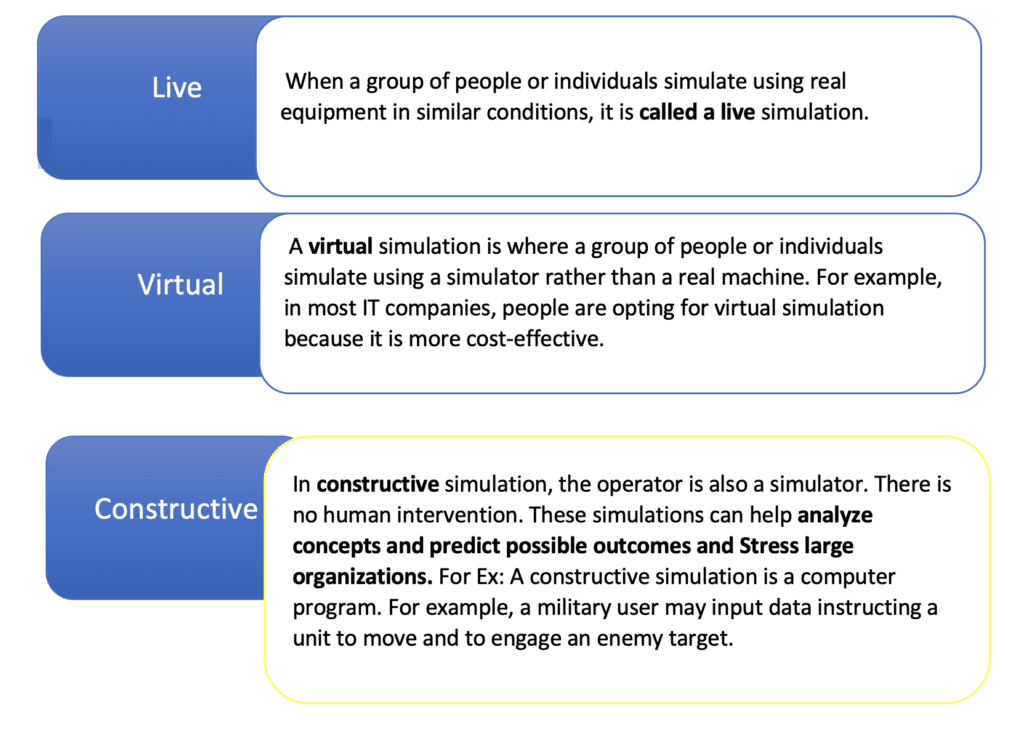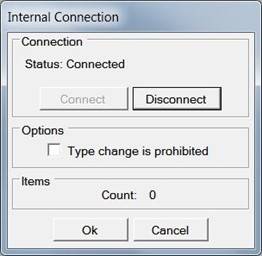- January 2, 2023
- Posted by: Sudhakar Rajaram
- Category: Digital Assurance

Do you know making an impression on someone is hard? Pretending to be like them is even harder. If you had someone who could pretend to be an expert who leads you to finish your work more efficiently, wouldn’t that be exciting?
What is a Simulator?
A simulator is a set of programs that mimics the behavior of a certain environment or replicates the configuration of a machine virtually. It helps to mimic the real device in the virtual world.
Simulators can be designed and developed as applications to be installed in any operating system. Because it is developed using the right coding language, simulators work much faster than emulators. Even though they are faster, they cannot give accurate solutions in certain circumstances.
Types of Simulation
Though simulation is used for various purposes in various fields, it can be classified into three types

Why Simulate?
Let’s consider the case of a company that develops control panels for aircraft as an example. The company develops the software and hardware of aircraft control panels. To test it, do they have to fit in a real aircraft and go on a raid? This is neither practical nor cost-effective. However, it is essential to test the aircraft to ensure there are no untoward incidents. This is where simulators can make a difference. The simulation will help the company to bring in more features quickly and make clients happy.

How are Simulators Developed?
Simulators are always developed to communicate with the application during run time. The simulator is developed along with developing the application using high-level languages like Java, Python, Dot Net, etc. Once developers develop the simulator, they will send it to test engineers in different formats like .dll, .exe, .bat, etc.
Considering the various types of simulators, there are some ways to launch simulators:
- If the given simulator is in the “.exe” file format, then we can simply launch by double-clicking the .exe file.
- If the given simulator is the “. batch” file format, then we can simply trigger by double-clicking the batch window file and launching it.
- If the simulator is an application, then launch the simulator as an app.
How to Configure and Control Simulators?
Essentially, simulators are software. Most simulators are designed based on the product, where each product has a different type of simulator. Some simulators have a configuration file with settings for the simulator. Some simulators get installed along with the application, while some simulators require the use of an “.exe” file to run on the system. We must use a command prompt with some commands to populate the simulator.
We should use the configure file to do some parameter settings on the simulator to run the application for a particular workflow.
There are some ways to control the simulator. They are:

How to Connect the Simulator with the Application
Once the simulator is configured and launched, then we need to deduct the simulators from the application to connect them. Another way is to detect the simulator from the application using the IP address of the system. For a few other types of simulators, we can connect the simulators to the applications using the command prompt. When the application and simulator are connected, the simulator will display an indication in green color.
Conditions to connect:
- The simulator and application should run on the same machine
- Both the simulator and application should run on the same network
- They can run on physical and virtual machines
Sample simulators to connect/disconnect:
Run Workflows
Finally, we are here to discuss the ultimate purpose of using a simulator. Once the simulator is connected to the application, set up the application and begin the simulation. While the simulation is running, you can change the values in the simulator immediately to understand whether the results are changing in the application according to the values given in the simulator. In a real instrument, it would take some more time to change because we need to follow the procedures before implementing the changes.
When the instrument simulator and application are connected, using the simulator would allow us to communicate, input parameters, and control the application.
Pros and Cons of Instrument Simulator



